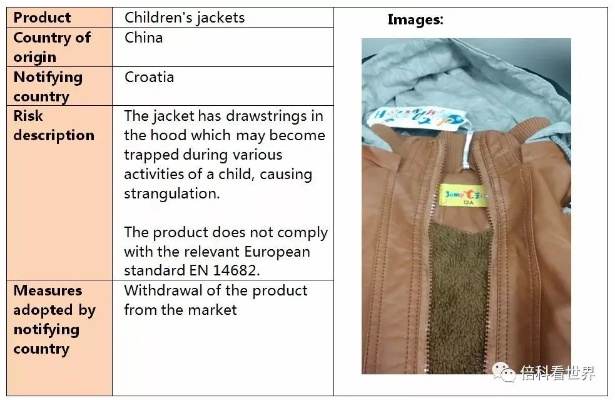The Role of Textile Testing and Inspection in Ensuring Product Quality
Textile testing and inspection are crucial in ensuring the quality of textile products, as they provide an objective evaluation of the materials used in their manufacture. These tests include various physical, chemical, and mechanical properties that assess the strength, durability, and functionality of the fabrics. By identifying any flaws or defects in the raw materials, these tests help prevent poor-quality products from reaching the market. Additionally, regular inspections during production can catch issues early on, minimizing potential damage to the final product. The results of these tests and inspections are critical for manufacturers to meet regulatory standards and consumer expectations, ensuring that textile products meet safety and quality requirements. Overall, the role of textile testing and inspection is essential in maintaining the high standards of quality that consumers expect from this industry.
Introduction: In the global marketplace, textile products are an essential part of our lives. From clothing to furnishings, textiles play a crucial role in creating comfortable living environments. However, as the demand for high-quality textiles increases, so does the importance of ensuring their safety and quality. This is where textile testing and inspection come into play. In this article, we will explore the significance of textile testing and inspection in ensuring product quality and consumer safety.

Textile Testing and Inspection: Textile testing and inspection refer to the procedures used to assess the quality, safety, and performance of textile products. These tests cover various aspects such as colorfastness, shrinkage, strength, durability, and environmental impact. By conducting these tests, manufacturers can identify any defects or flaws in their products and take appropriate measures to correct them before they reach the market.
Colorfastness Testing: Colorfastness refers to the ability of a textile material to retain its color after exposure to light, heat, and chemicals. This is critical for garments that may be exposed to sunlight or other external factors. For example, a fabric that fades quickly after washing will not be suitable for outdoor use. Colorfastness testing is carried out using standardized methods that evaluate the color retention over time under different conditions.
Shrinkage Testing: Shrinkage testing is essential for textiles that undergo dyeing or printing processes. During these processes, the fabric may shrink slightly, causing it to fit differently than when it was first made. Shrinkage testing measures the extent of this change and ensures that the final product fits properly.
Strength Testing: Strength testing is important for materials like carpets and upholstery that need to withstand heavy wear and tear. This test determines how much force is required to tear apart the material and whether it can withstand repeated use without breaking down.
Durability Testing: Durability testing involves evaluating the longevity of a textile product. This includes tests such as pill resistance, water absorption, and soil release. Pill resistance measures how easily pills form on the surface of the fabric, while water absorption and soil release tests determine how well the fabric can hold moisture and dirt.
Environmental Impact Testing: As consumers become more conscious about the environmental impact of their purchases, environmentally friendly textiles have become increasingly popular. Environmental impact testing evaluates a textile's production process, including the use of harmful chemicals and energy sources. This helps manufacturers find ways to reduce their environmental footprint and create more sustainable products.
Case Study: One company that has made significant strides in textile testing and inspection is Patagonia. The company produces outdoor apparel and gear that aims to reduce its environmental impact by using eco-friendly materials and processes. To ensure that their products meet the highest standards, Patagonia conducts rigorous testing and inspection throughout the manufacturing process. They also have strict quality control measures in place to ensure that their products meet the demands of consumers who prioritize sustainability.
Conclusion: Textile testing and inspection are critical components of ensuring product quality and consumer safety. By implementing these tests and inspections, manufacturers can identify and address any issues early on, preventing defects from reaching the market. As consumers become more aware of the environmental impact of their purchases, companies that prioritize sustainability and ethical production practices will thrive in the competitive marketplace.

纺织品检测标识标志概述
纺织品检测标识标志是确保纺织品质量的重要手段,它们不仅为消费者提供了产品的质量信息,也为生产商提供了质量控制的重要依据,在纺织品检测过程中,标识标志的设计和展示对于提高检测效率、保证产品质量具有重要意义。
标识标志的类型与作用
-
类型:纺织品检测标识标志主要包括产品标识标签、安全认证标签、环保认证标签等,产品标识标签是用于标识纺织品的主要信息,包括品牌、型号、材质、纤维含量等;安全认证标签则是用于证明纺织品符合相关安全标准;环保认证标签则是用于证明纺织品符合环保要求。
-
作用:标识标志的作用在于向消费者和相关部门传递产品的质量信息,提高产品的透明度,同时为生产商提供质量控制的重要依据,标识标志还可以提高检测效率,方便相关部门进行快速、准确的检测。
案例分析
以纺织品检测为例,我们可以看到一些成功的案例来进一步说明标识标志的重要性。
-
产品标识标签案例:某品牌的一款新型面料采用了环保纤维制作,其产品标识标签上清晰地标注了材质、纤维含量等信息,这样的标识标签不仅提高了产品的透明度,也方便消费者了解产品的材质和性能。
-
安全认证标签案例:某品牌的一款儿童服装通过了多项安全认证,包括无毒、无味、抗过敏等,其安全认证标签上明确标注了认证机构和认证标准等信息,为消费者提供了产品的安全保障。

标识标志的设计与展示
-
设计要素:标识标志的设计应简洁明了、易于识别,同时要符合相关标准和规范,标识标志的颜色、形状、字体等也要符合一定的规范,以提高标识的可见性和识别度。
-
展示方式:在纺织品检测过程中,标识标志的展示方式多种多样,包括在产品包装上展示、在检测现场展示、在相关宣传资料中展示等,为了提高标识的可见性和识别度,还可以采用电子显示屏、LED显示屏等现代科技手段进行展示。
英文案例说明
以下是英文案例说明:
英文案例一:某品牌的一款新型面料采用了有机棉制作,其产品标识标签采用了环保字体和绿色背景,清晰地标注了材质和环保信息,这样的标识标签不仅提高了产品的环保性信息透明度,也方便消费者了解产品的环保性能。
英文案例二:某品牌的一款儿童服装通过了多项安全认证,包括无毒、无味等,其安全认证标签上明确标注了认证机构和认证标准等信息,并在检测现场通过高清摄像头进行展示,这样的展示方式不仅提高了检测效率,也提高了标识的可见性和识别度。
纺织品检测标识标志是确保纺织品质量的重要手段,它们的设计和展示对于提高检测效率、保证产品质量具有重要意义,在纺织品检测过程中,我们应该注重标识标志的设计和展示,以提高产品的透明度,同时为生产商提供质量控制的重要依据。
Articles related to the knowledge points of this article:
The Interplay of Textiles for Strong Durability
Ranking the Number of Chinese Textile Brands
How to Peel Textiles for Color



